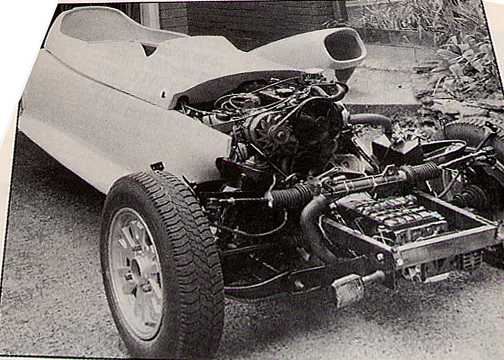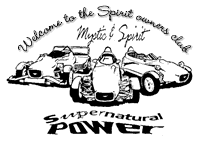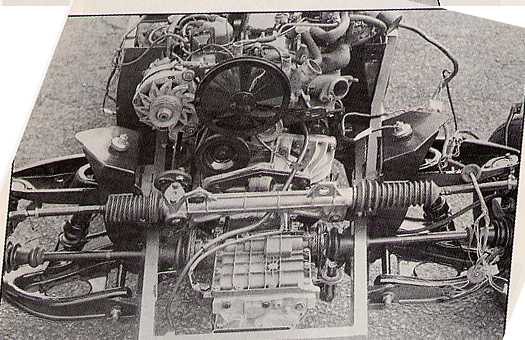 |
| version, the Kindred Spirit needs a Mini
handbrake. its accompanying support bracket is one of the forty
or so components which comes with the kit. However, by mounting
this angled bracket on top of a length of 25mm (1 in) square section
tubing, the complete assembly can then be bolted anywhere on the
floor to the right of the driver, In practice, it has to be positioned
well forward in order not to restrict passenger leg room. The original
cable also needed shortening - a job which has to be done with the
clutch cable, too. Having seen Julian Webb do this at Hudson's works
in Norwich, I tried the technique at home. It works! To find out
this secret of shortening cables and making alternative nipples,
read the manual. wiring Loom Provided all wires from a loom are
meticulously labelled when a donor is dismantled, this aspect of
kit car building isn't likely to cause problems. In the case of
this model, you can prune out some of the cables because you don't
have heater controls, washers or windscreen wipers. And fitting
the loom around the chassis members is easy However, it's a bit
more involved fitting front and rear lamp units on a Hudson Spirit.
The use of Yamaha motorcycle indicator lights on the front is highly
practicable, on account of their flexible stems. But I had to make
special mounting plates to support them. I also had to make up some
mounting plates from scrap to support the Hudson optional headlamps'.
These are one of the few items not included in a pretty complete
kit. At the back. the original lamp lenses are retained and Roy
Webb has ensured that the curvature of the rear section accepts
them neatly. However, the lamp enclosures are discarded and you
need to buy new Lucas bulb holders: these are quite costly. You
also need to work out how to illuminate the rear number plate -
a point overlooked on Hudson's first demonstrator. A neat answer
is to use one of the original number plate and reversing lamp units,
and so one of these was mounted on the rear mudguard. I also kept
a rear fog lamp, which was mandatory fitment on all post-October
1979 vehicles Once cleaned and fitted with mounting brackets, this
sat conveniently within the rear roll bar. Taking note that the
Kindred Spirit is low and a lorry cab is high, adding a conspicuous
fog lamp seemed a sensible safety precaution. As regards the brake
lines themselves, if you don't own a flaring tool, measure the length
of each pipe with a piece of string. Most motor factors can then
cut the material and shape up the ends in a magical machine to meet
your requirements. Radiator A weepy rad from the donor was exchanged
for a new one costing £45 In addition; a Marina overflow bottle
was purchased.you need to make up brackets yourself to support the
rad at a rakish angle. This angularity leads to some interesting
hose configurations but Renault rubber is a good starting point.
This angularity leads to some interesting hose and coupled with
a short length of brakes pipe to One of the two cables taken from
the donor car is configurations but Renault rubber is good for the
brakes drum. used on the Spirit. Unlike Hudson's single seater starters.
A local motor factor also found that a flexible overflow bottle
was purchased because it's brakes hose for the TVR sports car had
the right thread and profile to seat inside the compensator. compact.
You then need to make up brackets thread and profile to seat inside
the compensator. yourself to support the rad at the rakish angle.
This was duly attached, led over the swinging arm, Handbrake One
of the two cables from the donor are used. |
|
 Part
3/2
Part
3/2


 Part
3/2
Part
3/2

